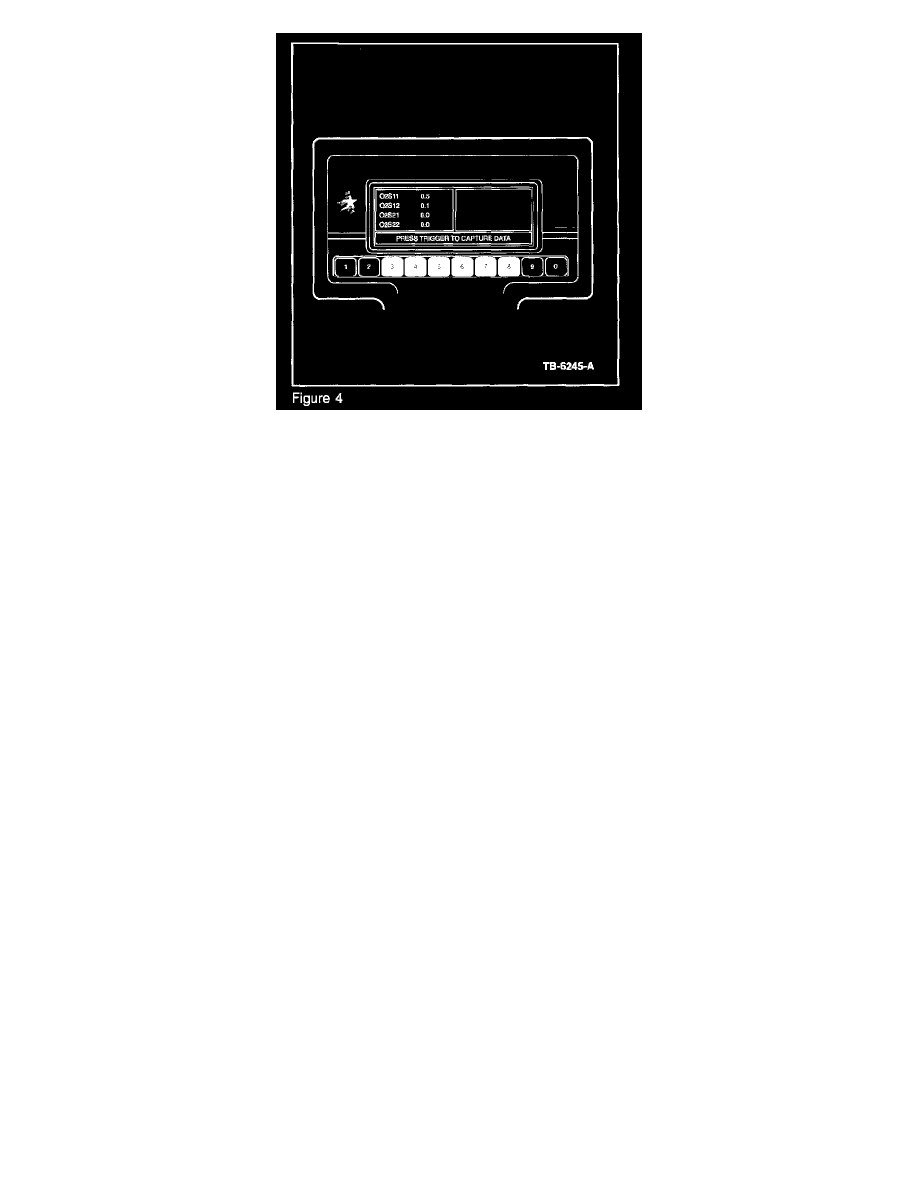Econoline E350 1 Ton V8-5.4L Prop SOHC VIN Z (1998)

4.
View H025 PID data carefully: NGS PIDs for HO2S sensors that do not exist (with certain exhaust configurations) will show a value of "0" volts
(refer to Figures 3 and 4).
In this example, the vehicle (equipped with a 4-cylinder engine) has one upstream and one downstream HO2S. Notice that the NGS (scan tool) display
shows two upstream and two downstream HO2S PIDs, and that the "unused" HO2S sensor PIDs display "0" volts.
5.
H025 sensors measure oxygen in the exhaust, not fuel: The exhaust gas condition reported by the HO2S sensor is based on the presence of oxygen
in the exhaust, not the presence of unburned fuel.
Example:
In the event of an ignition-related misfire, you might expect a rich HO2S reading, due to the amount of unburned fuel in the exhaust system. However,
there is also a large amount of unburned oxygen, since no combustion took place in the misfiring cylinder. Since the H025 senses oxygen only, it would
report a lean condition in this particular situation.
F2.) Tips Related to Heated Oxygen Sensor (H025) Monitor
1.
OBD II Response Rate Monitor: The OBD II
Response Rate Monitor (P0133/P0153) is only run at vehicle speeds between approximately 50-95 km/h (30-60 mph), during steady-state conditions.
The test lasts approximately 6 seconds. Therefore, P0133/P0153 cannot be diagnosed at idle in the repair bay.
2.
Do not compare H025 switch rate - Bank-to-Bank or vehicle-to-vehicle: Different H025 switch rates, from Bank-to-Bank, are considered normal.
The H025 switch rate, from one Bank to the other, should not be compared as a gauge of the H025's ability to switch/react. The PCM is
continuously adjusting spark and fuel in reaction to engine operating conditions (rpm, load, air flow, throttle angle, etc.). The PCM is also
continuously adapting to certain conditions (customer driving habits, engine and component wear, etc.).
F3.) Tips Related to Catalyst Efficiency Monitor
1.
Determining catalyst efficiency/switch ratio:
